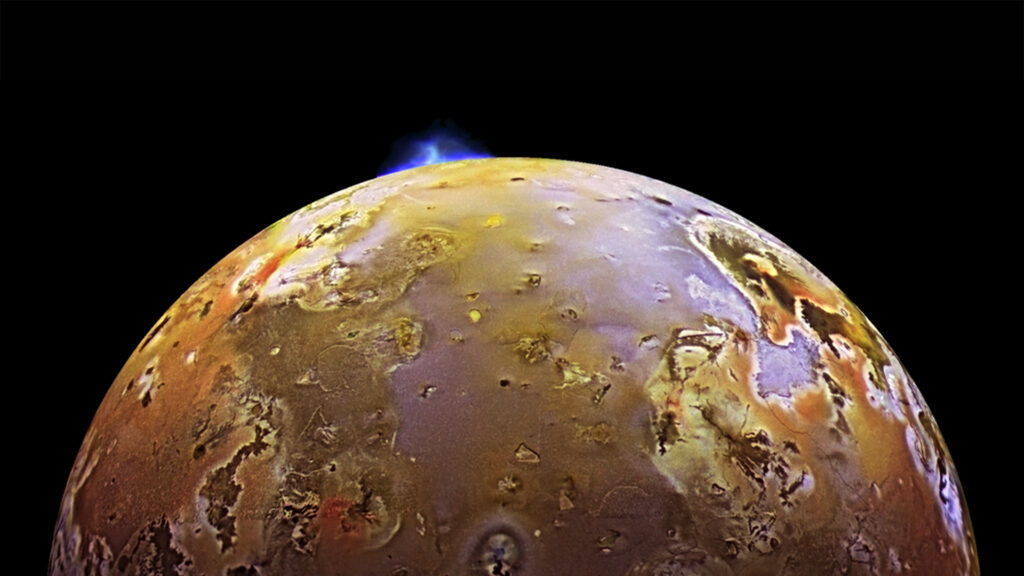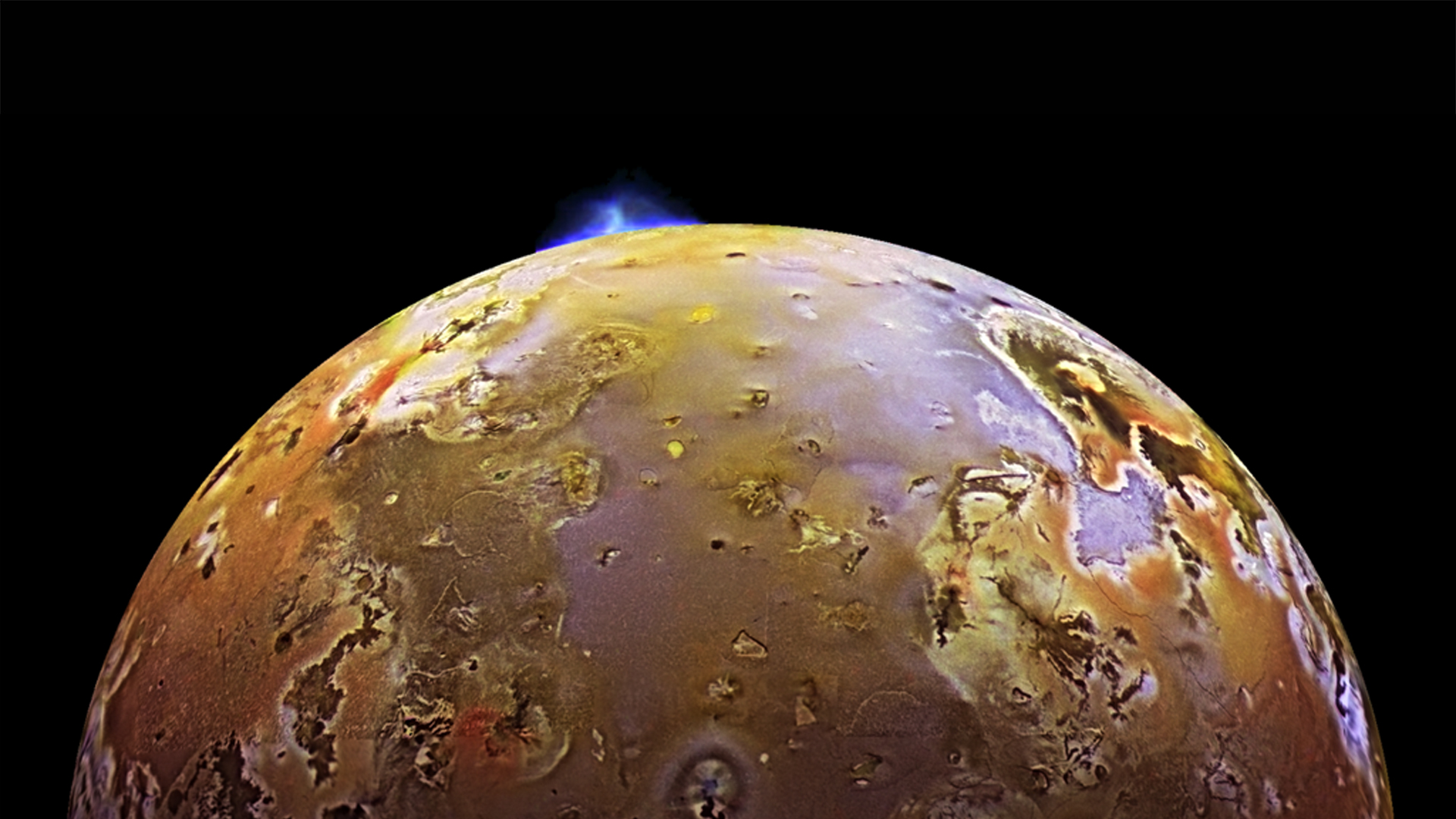There have been multiple missions that have improved our understanding of Io. This page highlights three notable missions for the moon: Pioneer 11, Voyager 1, and Galileo.
Pioneer 11
Pioneer 11 was a NASA mission lasting from April 1973 to November 1995. Pioneer 11 was intended as a mission to fly by Saturn, but also obtained information and pictures of Jupiter and its moons. This mission allowed the spacecraft to get much closer to Jupiter than ever before, though the time near Jupiter was short. Pioneer 11 approached Jupiter in December of 1994 and reached its closest point to the planet at 05:22 UT on December 3rd. After obtaining about 200 pictures of Jupiter’s moons, including Io, Pioneer 11 used Jupiter’s gravitational field to reorient and travel to Saturn. (NASA, Pioneer 11 2019)
Voyager 1
Voyager 1 is a mission that began in 1977. This mission’s intent was to fly past Jupiter and Saturn to obtain data. Voyager 1 is now in interstellar space, still collecting data to this day. (NASA, Voyager 1 – In depth 2021)
Voyager 1 is a notable mission for understanding Io better because of the images that the spacecraft was able to get. The images obtained during the mission had enough detail to show at least eight volcanoes erupting. These images are how we came to understand Io as potentially the most volcanically active object in the solar system. (NASA, Voyager 1 – In depth 2021)
Galileo
The Galileo mission launched in October of 1989 and ended in September of 2003. This mission was launched to enter Jupiter’s orbit and explore the planet more than ever before. This mission also allowed astronomers to study Io in more detail than had been possible in the past. The spacecraft entered Jupiter’s orbit in December 7th, 1995. (NASA, Galileo – In depth 2021)
The Galileo mission also allowed scientists to create maps of the Galilean moons (including Io) with improved detail. (NASA, Galileo – In depth 2021)
Galileo was able to take the temperature of Io, improving the understanding of the moon and the hundreds of active volcanoes on the surface. This information showed that there are volcanoes on Io that are hotter than volcanoes found on Earth. Scientists have determined from this information that the lava on Io is made of a material containing high levels of magnesium. (NASA, Galileo – In depth 2021)

NASA. (2019, July 16). Pioneer 11. NASA. Retrieved November 3, 2022, from https://solarsystem.nasa.gov/missions/pioneer-11/in-depth/
NASA. (2021, February 4). Voyager 1 – In depth. NASA. Retrieved November 3, 2022, from https://solarsystem.nasa.gov/missions/voyager-1/in-depth/
NASA. (2021, July 19). Galileo – In depth. NASA. Retrieved November 3, 2022, from https://solarsystem.nasa.gov/missions/galileo/in-depth/
